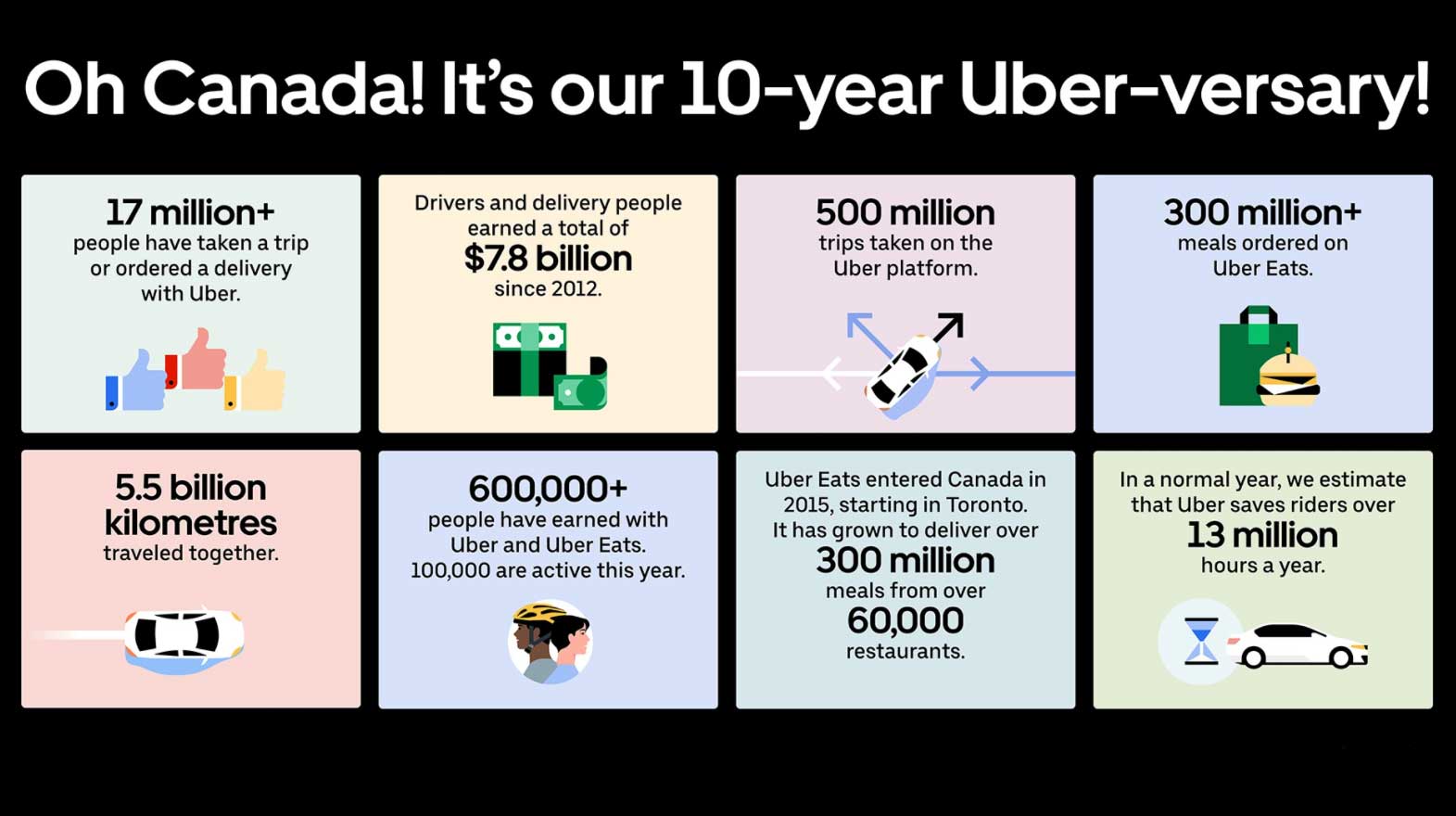
Uber launched in Canada exactly years ago today on March 15th, 2012 (Uber Eats came later in 2015). Since then, the service has become a staple in the transit and food delivery, along with providing Canadians an additional way to earn income.
To mark the occasion, the company, which was co-founded by Calgarian entrepreneur Garrett Camp, released statistics to show the impact it has had on Canadians nationwide. Its services are available in over 140 municipalities in the nation, spanning nine provinces.
Uber is easy to use and because of this, over the past ten years, over 17 million people have used the service to go somewhere or to have food delivered. About 500 million uber trips have been recorded and over 300 million food orders have been delivered since the service launched, recording over 5.5 billion kilometres in the total area covered.
Over 600,000 Canadians have worked hard behind the wheel and have earned a total of $7.8 billion since 2012.
“There are over 100,000 active drivers and delivery people on the road across the country” this year alone, says Uber in its blog post. “In a normal year, we estimate that Uber saves riders over 13 million hours a year. That’s the equivalent of driving from Halifax to Vancouver over 230,000 times.”
That is not to say that the past ten years have been easy for Uber. The industry it once had a monopoly over is now full of competition, leaving the company unprofitable — so much so that Uber lost more than $27 billion in the last five years alone, according to a Toronto Star report.
Rapidly increasing gas costs are proving to be heavy for drivers, and riders alike, who are now having to pay a higher cost for the same distance covered. Also, every price increase that Uber has attempted has been met with harsh pushback and criticisms from the app users.
Uber’s high scale also contributes to higher traffic levels in busy cities, resulting in more traffic congestions along with leaving a higher carbon footprint.
The company says that its focus for the next decade is on sustainability. The company has partnered with non-profit organization Plug’n Drive to support its drivers in making the switch to electric vehicles. This comes soon after the company committed to operating a zero-emission platform globally by 2040. In Canadian cities like Montreal and Vancouver, the company aims to achieve the same goal by 2030, alleviating some of the issues that have tainted the ride service’s image in recent years.
Image credit: Uber
Source: Uber
MobileSyrup may earn a commission from purchases made via our links, which helps fund the journalism we provide free on our website. These links do not influence our editorial content. Support us here.


